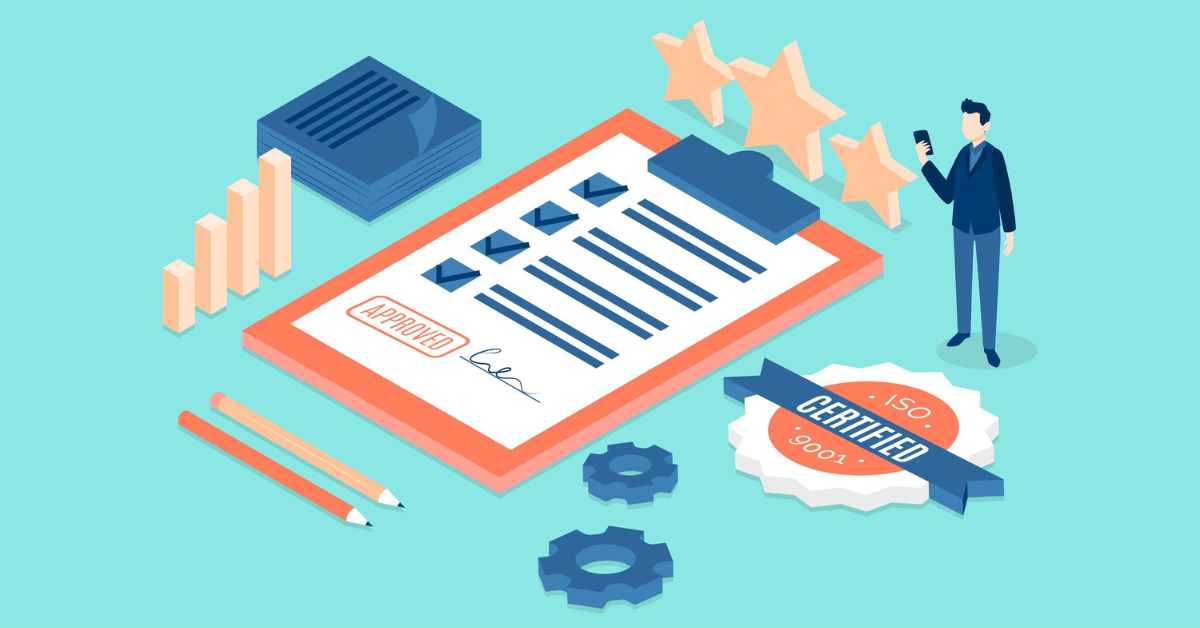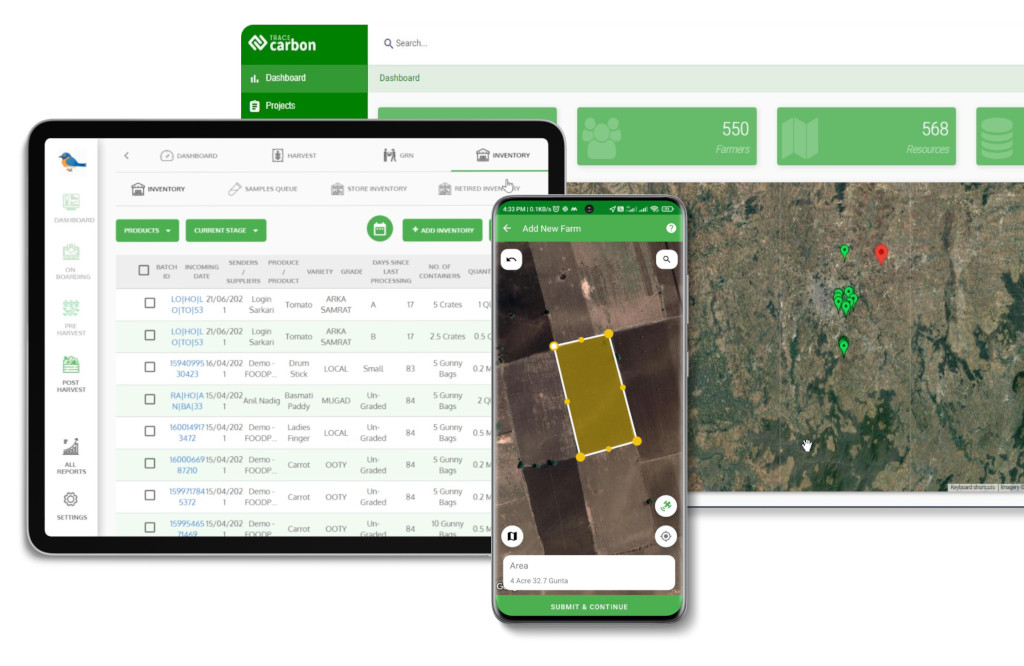Contact: +91 99725 24322 |
Menu
Menu
Quick summary: Looking for the best EUDR compliance platform for rubber? Learn how to choose a traceability solution that simplifies mapping, reduces audit risk, and helps you stay EU market-ready.

EUDR isn’t just coming — it’s here. And for rubber exporters, it’s not just about compliance; it’s about survival in the EU market. Starting in 2026, companies must prove — with plot-level geolocation and deforestation-free sourcing — that every kilogram of natural rubber is legally and sustainably produced. But here’s the problem: most rubber supply chains are built on fragmented farmer networks, manual recordkeeping, and limited field visibility.
This EUDR rubber buyer’s guide is designed to help procurement leads, sustainability teams, and agri-exporters navigate the complexity, evaluate tech platforms with confidence, and choose a solution that ensures traceability, scales with your operations, and keeps you EU-ready — without the chaos.
Key Takeaways
If you’re managing sustainability or sourcing in the natural rubber industry, the EUDR clock is ticking — and chances are, you’re already feeling the pressure.
Rubber has officially joined the list of commodities under the EU Deforestation Regulation (EUDR), meaning every kilogram of rubber entering the EU must be backed by proof of deforestation-free origin and a verified chain of custody. This isn’t just policy — it’s a market access requirement.
Sounds straightforward? Not exactly.
70% of the world’s natural rubber is produced by smallholder farmers, many of whom operate on plots smaller than 2 hectares across Southeast Asia and West Africa.
These farmers often:
So when EUDR demands GPS coordinates, due diligence statements, and traceability, it’s not just another compliance checkbox — it’s a major operational shift.
And that’s what keeps sourcing heads, sustainability managers, and exporters up at night.
They’re asking:
The short answer? Yes — if you have the right approach and technology.
This guide is designed to help you cut through the noise.
We’ll walk you through:
Whether you’re a sourcing lead, compliance officer, or sustainability manager, this guide will help you choose a solution that not only keeps you compliant — but helps you stay competitive.
Let’s start with the biggest compliance blind spots in rubber — and how to close them with confidence.
For Ravi, Head of Procurement at a Tire Manufacturing Giant
For Ravi, every day is a high-wire act between keeping production lines moving and managing increasingly complex compliance requirements.
He’s sourcing latex from hundreds of suppliers across Southeast Asia and Africa — many of whom work with smallholder farmers deep in forested regions. And now, with the EU’s Deforestation Regulation in play, his procurement decisions don’t just impact cost and timing — they could determine whether a shipment makes it across the border or gets rejected.
“How can I ensure my rubber is deforestation-free,” he asks,
“without slowing down procurement or chasing paperwork across 10 time zones?”
He’s not looking for more dashboards. He’s looking for:

Only if your platform supports geo-tagged, polygon-level mapping, even offline.
You’ll need risk scoring + deforestation overlays — and alerts before it becomes a problem.
Not with an end-to-end system that auto-collects, organizes, and generates EUDR-ready files.
Ravi doesn’t want to become a compliance officer. He just wants to keep rubber flowing to the plant, avoid surprises at customs, and sleep knowing the next EU audit won’t derail his week.
The right EUDR compliance platform doesn’t slow him down — it becomes a strategic sourcing tool.
Want to see how global giants are getting EUDR-ready — without disrupting supply?
Discover how a leading tire manufacturer digitized its natural rubber supply chain, mapped thousands of farmers, and streamlined EUDR due diligence with TraceX.
Read the full case study to see how compliance turned into competitive advantage.
For Sarah, ESG & Compliance Director at a Global Footwear Brand
Sarah wears many hats. She’s the guardian of her brand’s sustainability commitments, the gatekeeper for EUDR and CSRD compliance, and the voice that must confidently say:
“Yes — we know where our materials come from, and we can prove it.”
But rubber isn’t easy. It’s messy, fragmented, and sourced from smallholders across forests and informal systems. And in a world where one misleading claim can spark headlines and hashtags, Sarah can’t afford to rely on assumptions or spreadsheets.
Her worst nightmare? Greenwashing allegations from an activist group — or worse, a shipment rejection because her traceability broke down at the farm gate.

Only if your platform goes beyond batch tracking — into plot-level, time-stamped traceability.
Yes — with downloadable audit trails, integrated reporting templates, and real-time dashboards.
Absolutely. The right platform empowers teams to go beyond risk → into measurable, credible impact.
Sarah doesn’t just need data — she needs defensibility. She’s not checking a box; she’s protecting her brand and enabling real, reportable progress. A traceability platform that speaks compliance and carbon, deforestation and disclosure — that’s her game-changer.
Because when she walks into her next board meeting or investor call, she wants to say with confidence:
For Abdul, Cooperative Lead in Indonesia / West Africa
Abdul isn’t just managing a cooperative — he’s managing a community.
He’s the bridge between hundreds (sometimes thousands) of smallholder rubber farmers and the global buyers who rely on them. And with EUDR regulations fast approaching, he knows one thing for sure:
“If we can’t trace it — we can’t trade it.”
But let’s be honest: digitizing a supply chain that runs through remote villages, patchy internet zones, and low-tech environments isn’t easy. Many of his farmers don’t have land titles — some don’t even use smartphones. And yet, he’s being asked to produce GPS coordinates, declarations, and land-use history for each and every plot.
Abdul’s mission is clear:
Empower his farmers. Keep them in the global supply chain. Make compliance possible — even without Wi-Fi.
Because if it’s not built for the field, it’s not built for Abdul.
With an offline-first app, yes — data syncs automatically later.
Capture it through photo declarations, field notes, and timestamped uploads tied to GPS.
Only if your platform is intuitive, lightweight, and built for speed — not complexity.
Abdul’s goal isn’t just ticking compliance boxes. He’s fighting to keep smallholders visible, included, and economically viable in a system that’s growing more demanding by the day.
He needs technology that respects context — not complexity.
Because for Abdul, traceability isn’t about data.
It’s about dignity, inclusion, and opportunity.
And with the right tools, EUDR doesn’t have to be a barrier — it can become a bridge.
For Lisa, Digital Transformation Manager at a Rubber Processing Company
Lisa isn’t just digitizing operations — she’s redesigning how traceability works, from the moment latex is tapped in the field to the second it’s packed for export.
And she knows the stakes.
Regulations like EUDR, buyer mandates for deforestation-free sourcing, and growing scrutiny around sustainability claims all land squarely on her shoulders. And while she believes in the power of tech, she’s seen the mess that happens when platforms don’t talk to each other — siloed systems, audit delays, and manual rework.
Her mission? To build a connected, compliant, and future-ready value chain — without breaking her team in the process.
She doesn’t want a new “system.” She wants a solution that works with what’s already working.
Yes — with open APIs and configurable data pipelines, your traceability data flows directly into your ERP and QMS.
Absolutely — pre-built audit logs, time-stamped records, and document automation do the heavy lifting.
That’s where real-time dashboards and exception alerts come in — proactive, not reactive.
Lisa isn’t chasing compliance. She’s designing a smarter, more resilient operation.
One where traceability isn’t a cost — it’s a competitive edge.
One where audits aren’t dreaded — they’re automated.
And in a world where buyers, certifiers, and regulators demand answers fast, Lisa’s building a system that has the answers — and the proof — at her fingertips.
If you’re working in the rubber supply chain — whether as a processor, exporter, sourcing lead, or brand — 2025 marks a turning point.
That’s when the European Union Deforestation Regulation (EUDR) officially kicks in for real, with active enforcement, mandatory due diligence filings, and zero room for vague sourcing claims.
No GPS?
No land-use proof?
No verified traceability chain?
Yes, the regulation passed in 2023. But 2025 is when enforcement gets real:
Failure to comply?
Penalties can include fines, confiscation of goods, and exclusion from the EU market.
There was a time when digital traceability was a value-add. A nice-to-have. Something you presented to premium buyers.
That time is over.
Today, traceability is your ticket to stay in the game. If you can’t prove where your rubber came from — and show that the land hasn’t been deforested — you’re not compliant.
And non-compliance means blocked exports, reputational damage, and revenue loss.

EUDR compliance may start as a regulatory hurdle — but with the right platform, people, and processes, it becomes a strategic differentiator. Because while others scramble to react in 2025, you’ll be ready. Already traceable. Already trusted.
As EUDR deadlines approach, choosing the right compliance platform isn’t just a tech decision — it’s a strategic one. Your buyers expect proof, auditors demand transparency, and regulators won’t accept excuses. Whether you’re mapping thousands of smallholder plots or managing bulk latex from multiple regions, the right platform should make traceability seamless, documentation effortless, and compliance auditable. Now’s the time to future-proof your rubber supply chain — with a solution that scales as confidently as your business.
Don’t wait for 2025 to act — explore how TraceX helps rubber exporters lead the way in EUDR compliance.
TraceX supports polygon-level geo-mapping with offline-first mobile apps, allowing field agents to capture farm boundaries and GPS coordinates even in low-connectivity areas. Data syncs automatically when back online, ensuring no farmer or plot is left behind.
TraceX simplifies audit readiness with auto-generated, time-stamped audit logs, document versioning, and centralized digital records. No more hunting through emails or spreadsheets — your team is always prepared with everything in one place.
The platform integrates deforestation overlays and risk scoring based on satellite data. It flags high-risk plots in real time, enabling proactive sourcing decisions and preventing non-compliant batches from moving forward.
